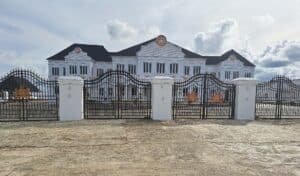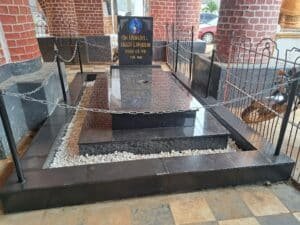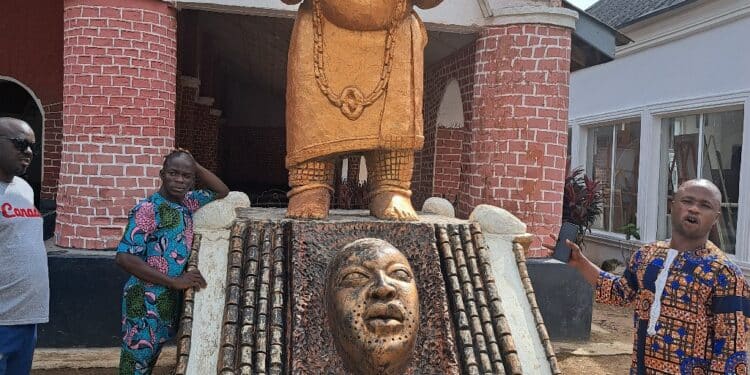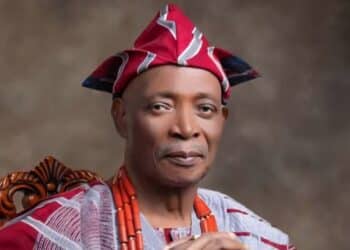The throne of the Ooni of Ife is highly revered. It’s said to be the same occupied by the progenitor of the Yoruba Kingdom, Oduduwa; hence, anyone sitting on the throne is considered the father of the Yoruba people.

The present Ooni of Ife, Oba Adeyeye Eniitan Ogunwusi, Ojaja II, is the 51st Ooni to reign in Ile-Ife, Osun State, famed as the ancestral home of the Yorubas. But among the 50 Ooni that have so far reigned, Ooni Obalufon is said to have lived the longest.
Obalufon was the 4th Ooni of Ife, a paramount traditional ruler of Ile Ife. Ooni Obalufon Alayemore, his son, succeeded him after Ooni Ogun.
Obalufon Ogbogboderin
According to one of the Emese of Ooni of Ife, Odesan, who took REPORTERS AT LARGE on a tour of some part of the ancient palace, Ooni Obalufon lived for 450 years, reigning for centuries, and was later transfigured into a metal figurine and eventually became a deity, hence the Ogbogbodirin sobriquet after his name, which literally means one who lived for a very long time.
Odesan claimed that because there was no calendar at the time, he calculated the years of his rule using events.
The Emese noted that there is more to Obalufon even in death, as he has become a prayer point for every Ooni that has reigned after him. The present Ooni of Ife once revealed that “Obalufon Ogbogbodirin holds the spiritually classified codes for Ooni’s long reign.”
Odesan further revealed that every Ooni that has reigned after Obalufon Ogbogbodirin has gone to where his figurine is before they were crowned, kneeled before it, and prayed to live as long as he had lived.
Ile-Ife
Ilé-Ifẹ̀ is an ancient Yoruba city in southwestern Nigeria. Ife is widely believed to be the oldest Yoruba city-state among the classical and post-classical ones, with recent in-depth archaeological estimates placing its founding between the 10th and 6th centuries BC. The city is located in present-day Osun State. Ife is about 218 kilometres northeast of Lagos with a population of over 500,000 people, which is the highest in Osun State according to the 2006 population census.
Ile-Ife has been proven to be the cradle of the Yoruba race. The eponymous ancestor of the Yoruba people, Oduduwa, who also served as the first divine king of the Yoruba people, founded Ile-Ife, according to Yoruba traditions. The name, Ile-Ife, literally means the place of dispersal. Today, Yoruba people populate the southwestern part of Nigeria, the Republics of Benin, Togo, Brazil, Cuba, Trinidad, and Tobago, and other places in the Caribbean, which underscores the political relevance of Ile-Ife in human development.
Ile-Ife Traditional Courts
Odesan also revealed that “just as we have different courts with jurisdictions in the modern governmental system, there are legal jurisdictions in Ile-Ife Palace to make legal decisions. The Emese Court is the lowest court where civil matters are adjudicated. Other courts, according to him, are the High Chief Courts, Ooni Palace, and the Ile Ase (House of Authority) Court. The House of Authority Court is the highest court where a criminal suspect or warring parties swear, and whatever they say comes to pass. It was gathered that past and present political leaders in the country come to the shrine to make supplications, and they come to pass.
Ooni Tombs

Another historical fact about Ile-Ife is that only four Oba Ooni of Ife were reportedly buried, and their burial tombs can be found in the palace. Other obas in the past turned to deities or other objects. The four recorded Oonis who were buried were the 47th, 48th, 49th, and 50th Ooni of Ife.

The reigning Ooni of Ife, Oba Adeyeye Enitan Ogunwusi, ascended the revered throne in 2015.












